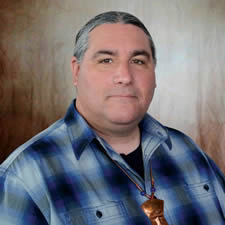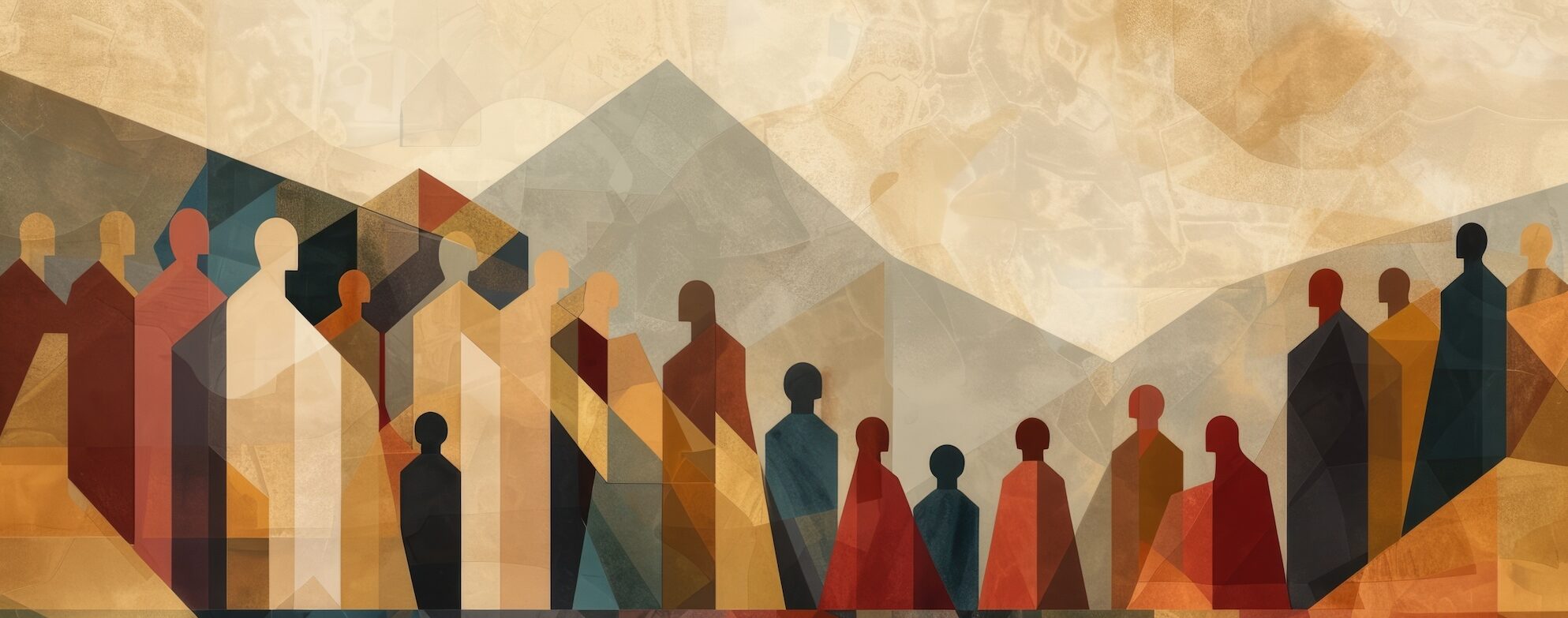The following is a chapter excerpted from the new book Reimagining Short-Term Missions, edited by Forrest Inslee (also the Editor of Christ&Cascadia) and Angel Burns. This collection of essays was released by Wipf and Stock Publishers in the spring of 2022.
I’ve been a youth pastor for thirty years, with twenty-five spent on the Yakama Reservation. In that time, I’ve witnessed hundreds of short-term trips to the reservation. Each trip repeated the same tired pattern: groups began arriving at the beginning of June for week-long stints, continuing every week through August. By summer’s end, hundreds of people had passed through the reservation in the fulfillment of their call to short-term “mission.”
During each visit, groups would hold their vacation Bible schools or kids’ clubs, ostensibly to get a bunch of little Natives “saved.” They might also paint houses and clean up yards in the community—though rarely would they take the time to create relationships with the people who lived in these places. It was enough for them to collect photos of themselves doing the Lord’s work, or selfies with the Native kids they were evangelizing—critically important images for the slide presentations for the folks back home. Week after week for the whole summer, more groups would arrive to paint more houses, clean more yards, get the same kids “saved” all over again and then go home feeling good about their accomplishments.
As well-intentioned as these short-term visitors might have been, their presence never really changed much on the reservation. And while they might have left feeling good about themselves, their visits were not so good for the Native people who hosted them. This had everything to do with the way they looked at the Yakama people: By defining our community as a “mission field,” they unintentionally communicated the message that we were essentially needy; relegated to being only receivers rather than givers in a mutual relationship.
I once watched as two little girls showed up at one of the STM kids’ club events at a reservation park. From their appearance, it was obvious they had been having a wonderful time playing in the dirt, as kids anywhere might do. One of the white teenagers running the event began brushing the dust off the little Yakama girls, crooning “Oh, you poor things! I wish I could just take you home with me!” As I watched this culture clash play out, the message was loud and clear: The short-term visitors thought that what they had to offer our kids was better than what we could ever give them. It was the message implied by every group, all the time: We were the humble receivers, and they were the blessed givers. Through these kinds of encounters, the shorter-term visitor communicates to the Native people, “We don’t need you. You can add nothing of value to our life. But we, on the other hand, have everything of value to bestow upon you.”
Disrupting Bad Practices
Partly as an act of resistance to this flawed perspective, we started Mending Wings—a nonprofit Native youth organization located on the Yakama Reservation in Washington State. We work to empower Native American youth and families to walk together in wholeness and beauty, to honor Creator through our cultures and lives, and to promote healing and wholeness through our programs. We also aim to share with others the life-changing hope we find as followers of the Jesus way.
One of the ways that Mending Wings shares that hope with those outside of our community is by offering an alternative to the “short-term mission” experience through a program we call SLAM (Students Learning About Missions). SLAM trips were born out of resistance to STMs—a mainstream practice that more often than not perpetuates false impressions among non-Natives and demeans indigenous people. As we’ve sought to disrupt conventional STM praxis, we have learned that a better approach to engaging teams from mainstream churches is essentially invitational; that we as the receiving community must set the agenda for short-term trips; and that we can offer the gifts of new perspective to help our visitors world views to be more complete. While we don’t claim that SLAM trips should be a universal model that can be employed in every host context, we do believe that there are elements that can be recontextualized by other Native American and First Nations people…and perhaps even by other indigenous groups elsewhere in the world.
Invitation Versus Imposition
SLAM trips were born out of the desire to see short-term mission trips to Native reservations radically altered. Mending Wings organizes and coordinates these trips and, most importantly, invites interested youth groups to the reservation. While this might seem like a relatively small shift in STM thinking, it does in fact represent a fundamental challenge to the typical model, whereby visiting groups assume their presence is wanted and needed. Instead, a SLAM trip is dependent on an invitation extended by representatives of the Yakama community. Rather than “targeting” an “underserved” or “needy” context, groups that are interested in the Yakama context might at best inquire about a visit, but then must subsequently wait to be invited into a relationship of copowerment by their hosts. It is a relationship of coequality and mutual respect, grounded in the assumption that each stakeholder group has something to learn from the other.
This reorientation to an invitational approach has made it easier for us to resist the pressure of politeness, and to actually say no to some prospective teams. In the process of preparing teams for their visit, SLAM staff are careful to explain that participants should never impose their presence on another community, and that visits must be guided and mediated by people who represent that community. That means in some cases that a visiting team should be prepared for the option of being turned away. If for example we sense that a prospective team is committed to the conventional STM goal of “Christianizing” indigenous people, we will not invite them to spend time with us. Indigenous peoples in North America have experienced profound abuse, genocide, and cultural destruction at the hands of missionaries who have sought to dominate us in their zeal for conversion. If a Native person gets any sense that a sending church might be framing the short-term trip in the objectifying terms of conversion (as opposed to simply bearing witness to Creator’s work in their lives), any sort of relationship becomes impossible, and that group will never be invited to come learn with us.
Teaching Trust
When it comes to hosting teams of visitors, one of Mending Wings’ objectives is to shift the balance of power—from a one-directional, top-down dynamic to a mode that is more mutual and respectful. In our approach, the short-term visitor is no longer a “missionary” in the conventional sense of the word; instead, we help that person to become a learner who at the very least recognizes a void in their cultural understanding of Native people. Thus, we shape the expectations of every short-term trip to emphasize learning about the Yakama context as the primary objective. Importantly then, we are the ones who define the learning objectives and agenda of each trip, since we are the ones who know our context and culture best. While we do involve our visitors in service projects, we also build into those experiences some opportunity to build relationships with people in our community. This re-orientation of the typical power dynamic of short-term missions allows us to build healthier, more mutually respectful relationships between the visiting teams and their Yakama hosts.
In a typical visit, leaders in our community plan cultural immersion activities, including an Indigenous worship circle, a frybread and salmon meal with traditional drummers and dancers, and opportunities to try Native crafting techniques. An important part of the learning experience is the reservation tour, during which they learn the stories and the historical meanings attached to our key landmarks; during this time, we also curate interactive discussion about the painful legacy of missionary influence among our people, and about efforts toward conciliation between the American Church and Native America. In these ways, we make learning from Indigenous teachers and community leaders the main component of this new missional model we have been designing.
Several days of the SLAM week involve community service projects that are chosen in advance by elders in our community. This sometimes meets with resistance in the visiting team leaders, who have become used to determining their group’s agenda. However, when non-Natives choose to recognize the authoritative role that elders have in Yakama society, they not only honor those elders’—they also raise the status of the elders in the eyes of the community as a whole and demonstrate respect for the culture. In so doing, those who represent authority from mainstream contexts convey the message to the Yakama people that “mission” must be done with the people, rather than to them.
By having our elders determine the service projects for STM groups, we ensure that the work will be relevant and useful to our community. At the same time we help groups to avoid the common mistake of imposing projects that prioritize their own preferences and priorities, or projects that allow them to stay within their own comfort zones. This approach is humbling by design, and challenges even the most servant-hearted teams to trust themselves to us—and to believe that we have their best interests at heart even as we protect the interests of the community.
Time has proven that our approach works well. Many of the older people in the community have expressed gratitude for the visiting teams’ efforts in their houses and yards—not just for the work that was done, but also for the manner in which it was done. They appreciate the time we build into the schedule for the short-term visitors to sit and talk with the owners of the houses before they do any work for them. In our context, even this seemingly small act of prioritizing relationship requires intentionality, and we find we must begin early in a team’s orientation process to help them to learn (and hopefully embrace) our value of relationship-building over “getting stuff done.”
The Gift of New Perspective
If STM visitors can get past thinking of our people as “the mission field,” SLAM trips provide the opportunity for them to consider the possibility that the Yakama people too are and have always been beloved by Creator…and to understand that Creator has always been at work among our people from the beginning. As a good friend and mentor once said, Creator did not come to this continent on the Mayflower. In truth, many Yakama cultural norms and traditions are actually congruent with the teachings of Yeshua. The core virtues of the Yakama Nation include honesty, compassion, respect, self-denial, service, and purity. Our traditional feasts and ceremonies commend thankfulness to Creator, and celebrate devotion of the individual to the communal good. These are truths we offer to those of our short-term visitors who have ears to hear.
One of the most important things that a SLAM trip participant experiences is exposure to Indigenous theological perspectives as alternatives to mainstream theologies that have been shaped by Hellenistic influences and a Western European worldview. We have found that when our brothers and sisters representing the dominant culture learn to question—and even deconstruct—entrenched Western theological presumptions, new doors are opened to authentic conciliatory conversation.
For example, we will sometimes work with our short-term visitors to become aware of the kind of American cultural Gnosticism that draws a hard line between material and spiritual realities, and encourages a devaluation of the material in relation to the spiritual. We contrast this dualism with the more integrated Yakama worldview, in which all creation, material and spiritual, is considered sacred, interconnected, and interdependent. There is spirit in all elements of Creation, human and nonhuman. From an indigenous perspective, we ARE that creation. We are not separate from it, as if Creation is there and we are over here. We have a saying, “thlakwi inmi naynuma”—all my relatives—a foundational truth that conveys this deep sense that we are connected to the world around us. The rightful role of human beings then is not to rule over or commodify creation. Rather, we must seek to coexist with and care for all our relations in the great family that is Creation—in a dynamic of kin-dom rather than kingdom.
Another significant dualism we help them to understand is the overvaluation of the divine over the secular that characterizes Western Christian thought and practice. Throughout history, the mainstream church has dismissed what Native cultures consider sacred—like a song, an eagle feather, or a ceremony—and judged them as syncretism and idol-worship. Thus Native people are deemed “savage” and “pagan,” and by definition then become the object of the missional efforts to “save” them. This way of thinking has historically had disastrous consequences for Native peoples in North America. Yet even today, the relatively small number of Indigenous converts are conditioned to reject aspects of their own cultures as essentially sinful. This of course has everything to do with the fact very few Native people identify as Christian, despite (or because of) hundreds of years of missionary efforts.
When it is Better to Receive than to Give
Students who choose to accept our invitation to travel to the Yakama Nation and learn from us and other members of our community usually leave with a greater understanding of Creator. At the same time, they learn accurate historical perspectives that engender appreciation for the beautiful cultures of Native peoples. We hope, too, that their time with us helps them to have confidence to share their new understanding with others.
One student participant described his time on the reservation as “deeply personal and yet far bigger than myself, my youth group, and my community as a whole.” In another conversation, the pastor of that youth’s church commented: “When our students come back from a SLAM trip, they are not the same. For many, their relatively narrow worldview gets deconstructed, and they see themselves with a little more humility; still others come to understand the pain of social inequality and systemic injustice in a whole new way. In the end we just stopped calling these trips “mission” trips because what they really ended up being were ‘transformation’ trips.”
In fact, Mending Wings doesn’t refer to these trips as “mission trips” at all, and we try to get the visiting teams to put aside that term because of the expectations and associations it implies. We make it very clear to prospective teams: “We invite you to come and learn. Your primary aim is not to bring something to us.” That is not comfortable for most, and sometimes they’ll counter with the question “How can we help each other?” Yet even that well-intentioned question makes the assumption that both sides have just as much to give to the other—and frankly, that is not always the case. Sure, ideally churches from different cultural contexts should learn to collaborate and find ways to bless one another out of their respective strengths. Yet when the balance of power between cultures has been so unequal for so long, the way to correct it is to put a lot of weight on the other side of the scale.
In North America at least, the question churches should be asking indigenous people is simply, “Will you help us?” In order to be able to do that though, they must first recognize the incompleteness of their perspective that comes from not listening to the host people of the land they now inhabit. If they aren’t humble enough to realize and acknowledge that their perspective is incomplete, then the question makes no sense to them. And until it does make sense, Native churches will continue to be the perpetual mission field, the needy recipients, the unreached, the marginal—all that church missions language we throw around so flippantly. This “mission mentality” reflects historically-rooted assumptions about culture, power, and worth. What the mission mentality does NOT reflect is the understanding that all churches are equally worthy in their cultural distinctiveness, and that no church, regardless of its culture, is complete in itself.
To be clear, it’s not just the STM visitors who gain on SLAM trips. The Yakama people experience benefits from SLAM trips, too—from the completion of service projects to being treated with respect by the trip participants. For many in the community, there is affirmation and healing when they experience cultural outsiders who do not come teaching “the right way,” and who do not unthinkingly demean the Yakama culture in their efforts to help. It’s a win-win paradigm shift, and one we hope to see replicated and contextualized in other Indigenous communities. And while we freely acknowledge the ways in which our guests serve the community, we make it clear to them that they must cultivate the humility to be served, and an open-heartedness that allows them to be changed by their encounter with the Yakama people. Because dominant STM culture too often emphasizes a one-way service dynamic that privileges STM participants, we contend that it is necessary to flip the script, and to call attention to what our visitors receive from the communities they serve. The ethos of SLAM trips then is a corrective to the cultural hubris that has caused most short-term trips to do more harm than good.
On some level, every SLAM trip we host on the reservation is an act of resistance against those aspects of short-term missions that work against the practical coequality of all peoples who love and follow Yeshua. When we share with our guests the trauma and loss that misguided missionary efforts have caused the Yakama people, both those with the courage to speak the stories and those with the courage to listen become collaborators in making space for a completely reimagined paradigm to displace conventional STMs. And as we create opportunities to engage one another in authentic curiosity and respect, we make cultural reconciliation that only mutual understanding makes possible. As one youth director of a visiting group testified, “We have built a relationship to keep learning and serving, bridging two cultures together and glorifying God in the process.” If the lives of Native and non-Native people are seen as two separate rivers, it is our ultimate hope that in Yeshua the rivers can learn to flow together as one.
To all diverse peoples in the world—those who share a common love for the One who made us all:
Tamánwiła, naknúwit chī mami wakíshwit.
Creator, bless these lives.
This article was written by Corey Greaves, with Lenore Three Stars and Doug Volle.
Doug Volle
Doug Volle is a graduate of the International Community Development master’s program at Northwest University. He participated in traditional STMs and desires to leverage that experience to help Christ-followers reframe how they view missions. He earned a Bachelor of Arts degree from Purdue University and served 8 years in the U.S. Navy. He currently resides in Seattle, WA.
Lenore Three Star
Lenore was born on Pine Ridge Reservation in South Dakota, where her father was born. Her mother is Minnecoujou Lakota from the Cheyenne River Reservation, S.D. Lenore received her B.A. from Fort Lewis College in Durango, Colorado. Upon retiring from a federal civil rights career in Seattle, she moved to Spokane to be an active unci (grandmother) to her two takojas (grandkids), and later earned an M.A. through the North American Institute of Indigenous Theological Studies from Portland Seminary/George Fox University in Oregon. Lenore speaks, writes, and co-facilitates for the annual Journey to Mosaic, a faith-based racial reconciliation experience in the Pacific Northwest. Lenore also serves on nonprofit boards related to her interests in the local community (CupofCoolWater.org), Justice (Evangelicals4Justice.org), Indigenous issues (Eloheh.org), and a discipleship of creation care (Circlewood.online).
Photo credit: Devin H



